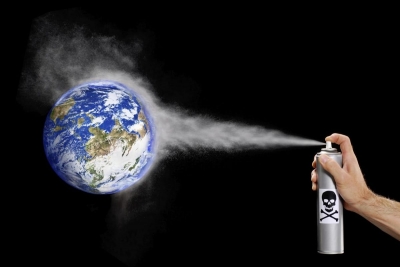
Any of several organic compounds composed of carbon, fluorine, and chlorine, chlorofluorocarbons (CFCS) are non-toxic non-flammable chemicals. If it contains hydrogen in place of one of the chlorines, they are called hydrochlorofluorocarbons (HCFCS) Originally developed as refrigerants in the 1930s. CFCs gained commercial and industrial value as they found use in the manufacture of aerosol sprays, solvents and foam-blowing agents. CFCS, however, were eventually discovered to pose an environmental threat at a serious: level as they contribute to the depletion of the ozone layer and hence are being phased out throughout the world.
What are the applications of CFC?
Chlorofluorocarbons are used in a variety of applications because of their low toxicity, reactivity and flammability. Every permutation of fluorine, chlorine and hydrogen-based on methane and ethane has been examined and most have been commercialized.
Furthermore, many examples are known for higher numbers of carbon as well as related compounds containing bromine. Uses include refrigerants, blowing agents, propellants in medicinal applications and degreasing solvents.
How do CFCs impact the environment?
However, the atmospheric impacts of CFCs are not limited to their role as ozone-depleting chemicals. Infrared absorption bands prevent heat at that wavelength from escaping the earth’s atmosphere. CFCs have their strongest absorption bands from C-F and C-Cl bonds in the spectral region of 7.8–15.3 µm—referred to as “atmospheric window” due to the relative transparency of the atmosphere within this region.
The strength of CFC absorption bands and the unique susceptibility of the atmosphere at wavelengths where CFCs (indeed all covalent fluorine compounds) absorb creates a “super” greenhouse gas (GHG) effect from CFCs and other unreactive fluorine-containing gases such as perfluorocarbons, HFCs, HCFCs, bromofluorocarbons.
Use of certain chloroalkanes as solvents for large-scale application, such as dry cleaning, have been phased out, for example, by the IPPC directive on greenhouse gases in 1994 and by the volatile organic compounds (VOC) directive of the European Union in 1997. Permitted chlorofluoro alkane uses are medicinal only.
According to scientific communities, the hole in the ozone layer has begun to recover as a result of CFC bans. India is one of the few countries that are pioneers in the use of non-Ozone Depleting technologies and have a low Global Warming Potential (GWP).
Credit : BYJUS.com
Picture Credit : Google




